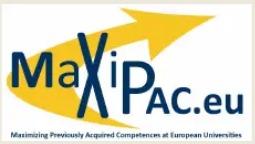The aim of this outcome is to examine how eLearning platform can be used and maximised in higher education for third country nationals including refugees. Since many refugees do speak English and not the local national language, eLearning can offer a solution.
We investigate which tools are useful to give third country nationals access to courses that are either only taught in the local national language or require a lot of national knowledge that the refugee has missed.
Because the online tools are offered in English and can be re listened as often as necessary, e-learning can offer a solution.
The output will consist of two elements:
- A guideline, explaining which e-learning formats are available today, and an assessment which of these can contribute to the purpose of helping third country nationals and refugees overcome the issues discouraging them from higher education in Europe.
- Practical proof-of-concept e-learning materials, supporting the feasibility of the guideline: by producing real-life didactical e-learning materials, we will learn whether the guideline is fit for purpose. The production of these materials in parallel with the guideline is expected to enrich the guideline. At the same time the e- learning will be delivered as inspirational materials to fully understand the meaning of the guideline.
Elements of innovation
- The usage of digital technologies to support the learning process of students is in the front line of innovation these days: new digital learning technologies are invented daily, as technology evolves rapidly
- Alongside with the technical aspect of e-learning capabilities, there is an important innovation aspect to the educational approach on how to use these technologies in a learning context.
Expected impact
- The target group of third country nationals including refugees is expected to be actively helped in both finding their way into the European universities educational offering, as well as finding practical study benefits by means of e-learning support
- The European universities are expected to benefit from this output, by yielding a guideline that gives direction in how to implement digital learning technologies to help refugee students. As a side effect also European exchange students might benefit from this output.
Transferability potential
European universities have a similar internal structure and comparable services: enrollment, student services, facilities services, education, etc. The organization structure comprises of a rectorate and faculties headed by deans. Since the Middle Ages professors have moved between European universities, and in recent times this is continued by Erasmus/Erasmus+ exchanges. This contributed to the current standardization of university structures. We are therefore convinced that a sound recognition procedure (i.c. O5) for third country nationals can be transferred to other European universities.
